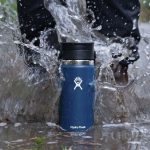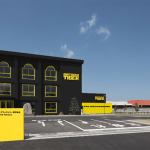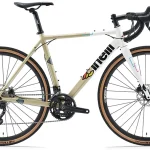The 2009 Holiday shopping season kicked off with what appeared to be large increases in traffic for many retailers, but that traffic apparently resulted in less sales than expected for many. Early indications are that consumers got out early to snap up the deep bargains but yawned when it came to traditional discount pricing. Consumers kept on walking for 20% off as they made their way to stores offering 50% off and more for Black Friday.
High def TV’s, laptops and GPS devices were the early winners, although there were indications that sporting goods product also fared well. Some retailers suggested that strong purchases of denim and flannel shirts, in addition to the electronics items, may indicate that consumers are actually buying discounted items for themselves more this Holiday season than in years as they search out bargains to feed the pent-up demand.
There was also evidence that tighter inventories led some retailers to focus discounts on selected items instead of a broad range of goods — and those products sold out early.
Fliers hit the market with deals across the board, but it was again Walmart and the warehouse club stores that got the most attention with very deep discounts on key electronics designed to get shoppers in and shopping for other product. While fliers got the momentum going, there is strong evidence that technology is playing a bigger part in bargain hunting and purchasing as shoppers (and some savvy retailers) used Twitter to “tweet” locations of hot deals and bargain basement prices, while consumers used cell phones to make more online purchases this year as well.
A National Retail Federation survey conducted over the weekend indicated that more people spent less. According to NRF’s Black Friday shopping survey, conducted by BIGresearch, 195 million shoppers visited stores and websites over Black Friday weekend, up from 172 million last year. However, the average spending over the weekend dropped to $343.31 per person from $372.57 a year ago.
Total spending reached an estimated $41.2 billion for the weekend, according to the NRF report.
Preliminary ShopperTrak sales data showed shoppers spent $10.66 billion on Black Friday, a 0.5% increase over last year’s kick-off for the Holiday season. In 2008, Black Friday sales measured by ShopperTrak rose 3% compared with the prior year's Black Friday. Last year's entire holiday season marked the worst performance in nearly 40 years.
ShopperTrak stuck by its forecast for total holiday sales to rise 1.6% this year compared with 2008. The ShopperTrak data does not reflect online sales, which apparently was a bright spot for the weekend.
Online retailers didn’t wait for Friday and got the jump on brick ‘n mortar retailers with Thanksgiving Day promotions.
Online retail analytics company Coremetrics said its data showed the average amount online shoppers spent on Black Friday rose 35% as shoppers spent roughly $170.19 an order — up from $126.04 last year. The company also said online shoppers also bought more items with each purchase, averaging 5.4 items per purchase this year versus 4.6 items in 2008.
Black Friday also saw greater use of mobile phones for searching for deals and making purchases. Mobile online payments through PayPal surged nearly 650% according to a PayPal spokesperson, but it was off of a small base.
To drive traffic among the more savvy deal-driven consumers-a number of retailers were using social media tools like Twitter and Facebook to get their message out and create more of a “crowd-sourcing” atmosphere where re-tweets clogged Twitter feeds last week. JC Penney, Kohl’s and Target all engaged in social media marketing programs to drum up Black Friday sales. Sears held a Facebook sweepstakes to win a $500 gift card and the chance to shop its Black Friday deals before Thanksgiving.
Marian Salzman, president of Euro RSCG Worldwide PR, told Reuters that social media is becoming a more integral element of the total consumer shopping experience as they seek to buy at the lowest possible price. The viral effect of these programs provides a very economical marketing opportunity.
“It's almost crowd sourcing for opinions,” said Salzman in an interview with Reuters. “We increasingly need affirmation from our peers and our loved ones and the people that create our lifestyle to feel good about where we are buying things.”
The NRF survey also indicated that more people purchased sporting goods during this year’s Holiday shopping kick-off weekend, with 12.6% of shoppers surveyed indicating a sporting goods purchase this year versus 11.4% for the comp weekend in 2008. According to the survey, nearly one-third (32.2%) of shoppers purchased toys, an increase of 12.9% from last year and 21.2% purchased gift cards compared to 18.7% last year.
SportsOneSource analysts and editors were out in force over the weekend assessing the market trends and talking to retailers.
Black Friday deals ranged from blockbuster deals on limited items, 25%- to 33%-off coupons, “Buy 1, Get 1 50% off”' promotions on select merchandise, to cash cards for spending over a certain amount. The Sports Authority grabbed some early media attention by offering up to $500 cash cards to early arrivers at its 5:00 a.m. opening.
At Dick's Sporting Goods, promotions in the hunting and fishing section focused on high-priced, large gifts. Items like gun safes, trail cameras, tree stands, guns and rods/reels saw the deepest discounts – many of which were compounded by mail-in rebates. For the most part, lower-priced accessories like hats, knives, scent control products, artificial lures and fishing lines were regularly priced with a few select exceptions.
Many retailers, especially outdoor specialty retailers, are operating with record-low inventories and discounting items that are likely to sell out anyway was clearly counter-productive. As early as Saturday, some of the larger chains had big, empty, cardboard POP displays on the floor with no back-stock available illustrating just how acute the inventory shortage is likely to become in the weeks preceding weeks Christmas.
Some stores focused on heavy early-bird discounts that ran as early as 5:00 a.m. to as late as 3:00 p.m. on Friday. But some morning deals were more moderate and some stores purposely designed their marketing efforts to get people shopping throughout the weekend. Gander Mountain offered early-bird specials on both Saturday and Sunday as well, and both Gander Mountain and Bass Pro were open on Thanksgiving.
Torrential rains in the Northeast did nothing to dampen Black Friday bargain hunters, all of whom were focused on early bird deals. But it was also noted that as soon as early bird deals expired people went home. Traffic was markedly lighter in the afternoon. The mall-based athletic shoe retailers had average traffic over the weekend as most stayed above the fray.
Regional Northeast sporting goods retailers like Olympia and Modell’s had very aggressive early bird pricing and benefited greatly. National sporting goods retailers in the market saw “decent but not great traffic,” according to one analyst that spoke with Sports Executive Weekly.
As usual, steep discounts were being offered on bigger tickets such as treadmills, game tables, GPS devices and gun lockers. Major offers were also being made across fleece, team apparel and outerwear categories. Most athletic footwear deals came at a 33% to 50% discount.
Most brands seem to be keeping tight control over their pricing this year, following the aggressive promotional environment experienced last year. Retailers also seem to be re-thinking their promotional strategies that delivered deep store-wide discounts even before the Thanksgiving holiday last year. Still, there was much made of discounted Under Armour Cold Gear product designed to bring people into the big box stores, but most retailers that spoke with SEW did not see it as a big deal. Many were also promoting Nike Pro apparel for $10 below the discounted UA Cold Gear product. Both brands seemed to have front page flier offers for many of the key regional and national retailers.
When asked what items had been the best movers for Black Friday, one Dick’s Sporting Goods sales associate quipped, “Golf balls and ammo.”
Matt Powell, chief retail analyst for The SportsOneSource Group, is forecasting that the retail business will be soft from now until “right before Christmas.”















